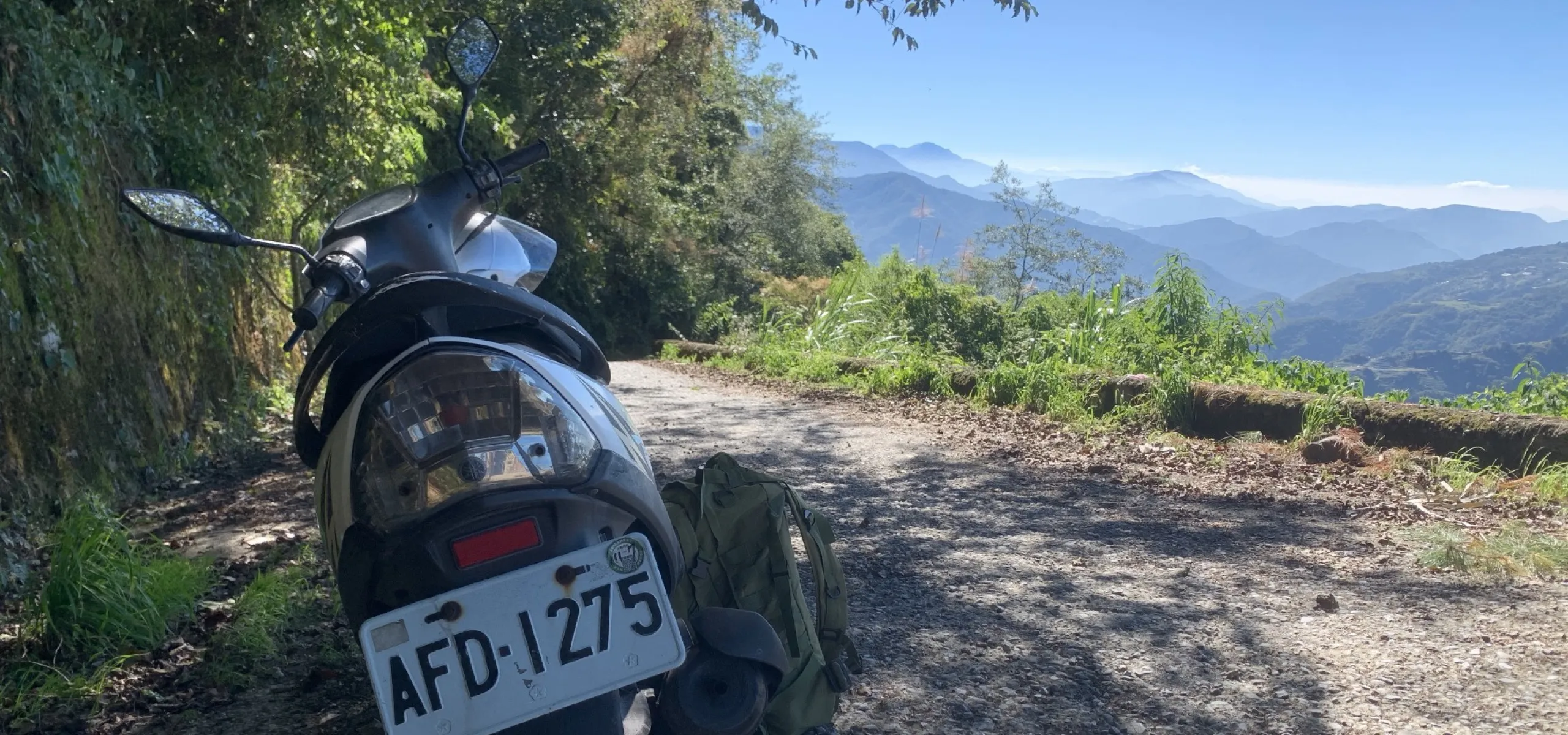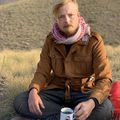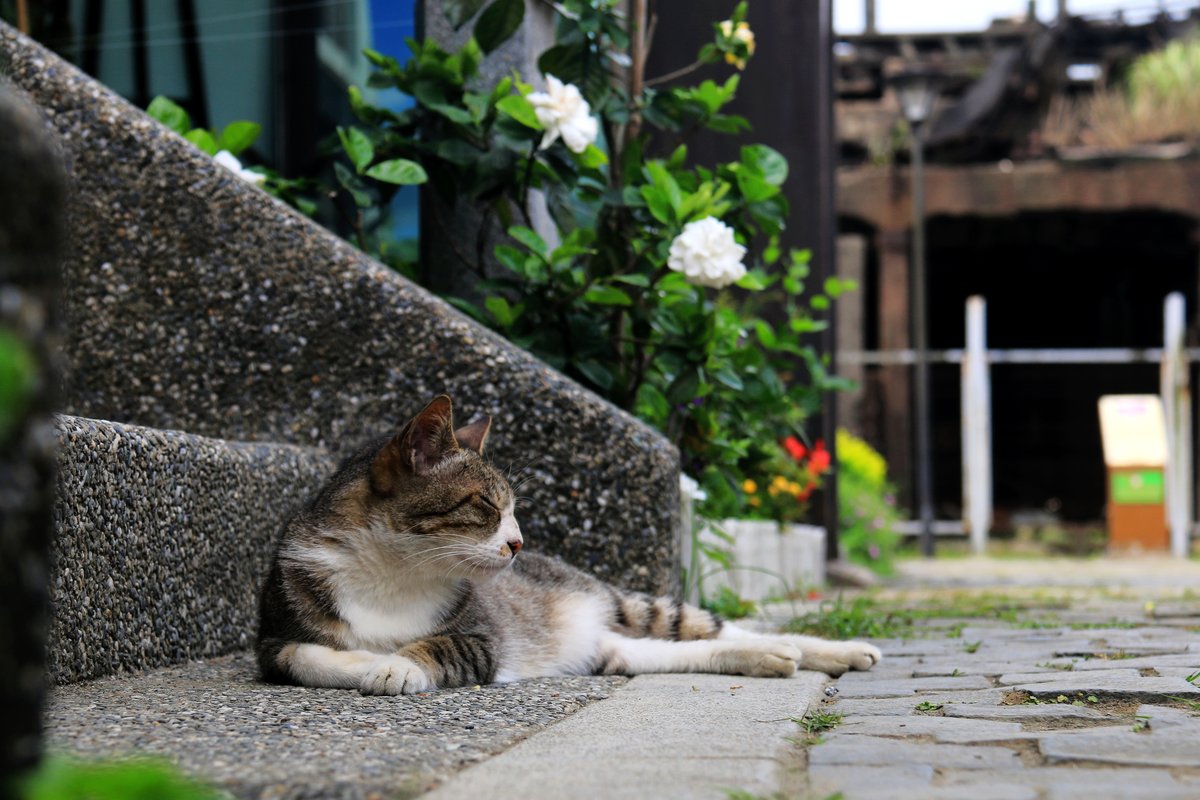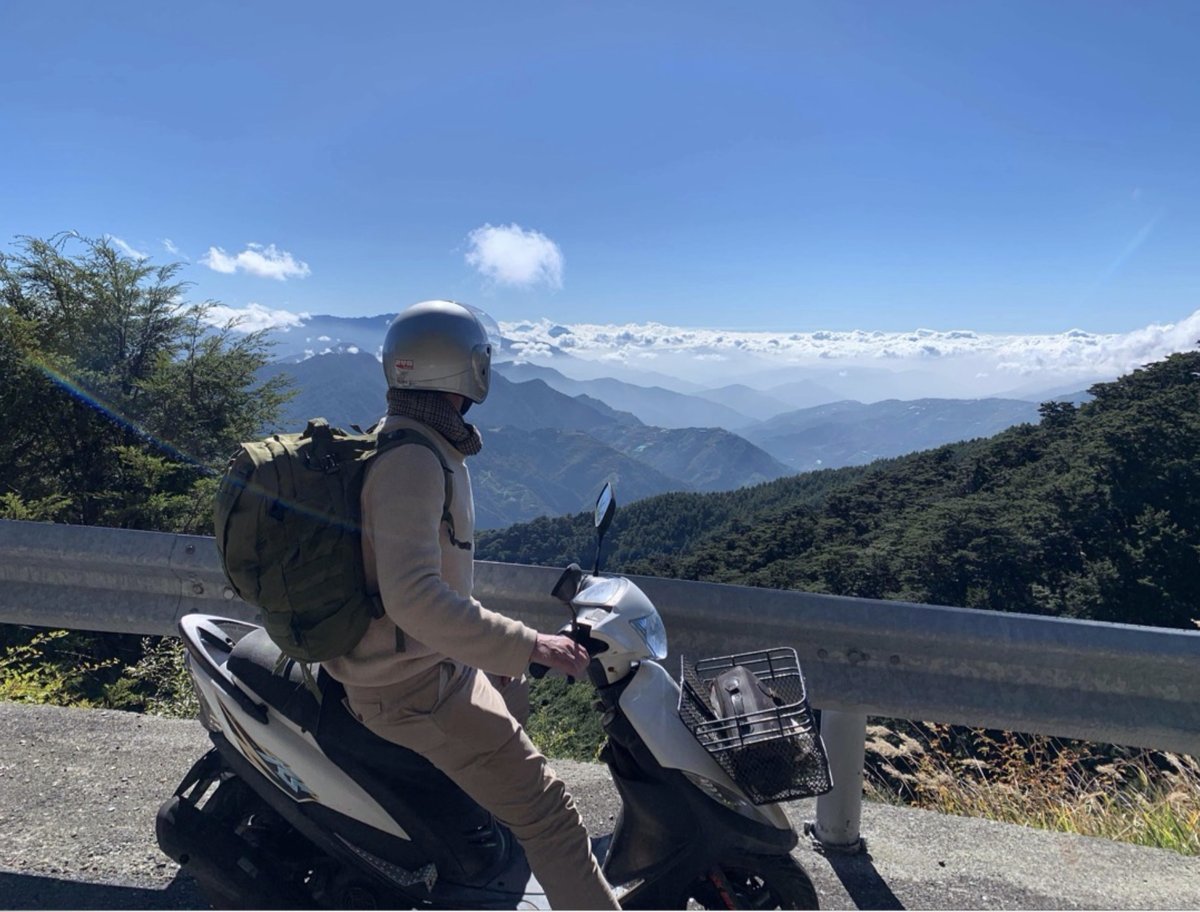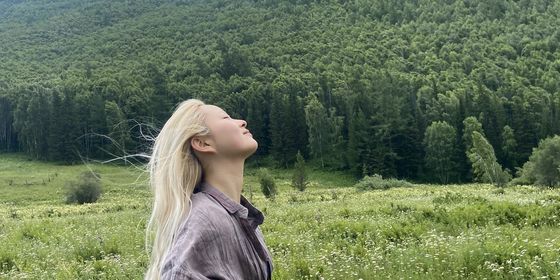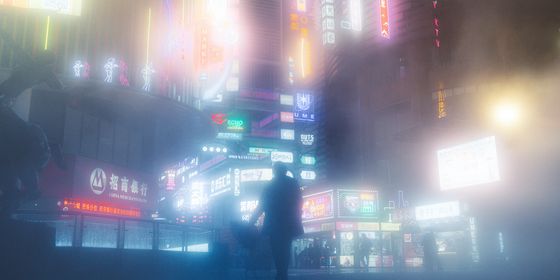A once-in-a-lifetime pilgrimage around Taiwan by motorbike
“Before they die,” Zhang, my friend in Taipei, told me when I arrived in the city, “a Taiwan person should achieve three things: Swim in the Sun Moon Lake, visit the highest peaks of the island, but most importantly…”
He paused for dramatic effect.
“… finish a huandao.”
In Taiwan, to travel around the island, or huandao (环岛), has become a ritual symbolizing freedom and life for many ordinary people. Whether on foot, bicycle, motorbike, or even train, the journey has been portrayed in countless movies, thoroughly embedding a huandao trip as a dream people of all ages yearn to make a reality within their lifetimes.
Late last year, I embarked on a huandao of my own around Taiwan, to explore the island and meet people along the way.
A ritual of freedom and life
Huandao, literally meaning to circle the island, was popularized with the 2007 movie Island Etude, in which a young man circles Taiwan on a bicycle in a mind-boggling seven days. This has created the misconception that mere days is all it takes to circumnavigate the island, although the shortest route to huandao still stretches around 1,000 kilometers—possible, but only if you don’t do much other than cycling. Prior to the 2007 movie, bikers, hitchhikers, and long-distance trekkers also set out on the circular route along the coast of Taiwan, but the movie made it a concept for future generations to emulate.
“If you don’t live fully now, you may never get the chance again!” goes the catchphrase in the movie’s trailer. Today, thousands of travelers make their way around the island each year—even foreigners like myself. To locals, the trip around the island is usually a long-awaited pilgrimage that may be realized during a summer vacation, a sabbatical from work, after graduation, or during retirement.
I was not about to bicycle around the island, though. Instead, I opted for a motorized version. I had purchased a 125cc scooter from a second-hand motorbike shop just off the railway station in downtown Taoyuan, west of Taipei. “It’s as good as new,” the motorbike shopkeeper said. “I frequently drive it myself!” He painted up the rusty parts of the motorbike chassis anyway before handing it over to me.
“You are just gonna drive it around Taoyuan and Taipei, right?” he asked.
“I might go a bit farther than that,” I answered before heading out.
On a cool November morning, I hit the road to commence a clockwise huandao trip. There are three major routes for the trip. The first option goes counter-clockwise, traveling south from Taipei through the major urban areas of Taichung, Chiayi, Tainan, and Kaohsiung on Taiwan’s western plains all the way down to the southern tip at Kenting, before going back up the less populated and picturesque eastern shore. My clockwise option is slightly more challenging, as it means taking in the frothing jungles and nature on the eastern side of the island first.
The last option was usually only recommended for those who had done a huandao before: to traverse the island north to south over the Central Mountains over a far more demanding and steep road, with stunning displays of nature throughout. The island of Taiwan itself is just under 400 kilometers tip-to-tip, and I expected to finish the trip in about a month—with many stops, planned and unplanned, along the way.
I drove north toward the coast, zipping through villages in the flatlands between Taoyuan and Taipei before I hit the coastal Road 61 that would take me to the island’s northernmost point. Under the morning sun, a cool breeze came blowing in from the Taiwan Strait, where ships were sailing to and fro through one of the busiest shipping lanes in the world, where it’s estimated that over 21 percent of global trade—3.4 trillion US dollars’ worth—passes through.
Taking a ferry across a fjord, I disembarked near Fugui Cape, Taiwan’s northernmost point. Fishermen were fishing from the black rocks and cliffs on the edge of the waters. “There’s enough to catch here,” one fisherman told me, “but you have to be patient.” His name was Chih-Hung and he was 54 years old. He had been up fishing since 7 in the morning to secure a good spot at Fugui Cape, and beside him there was a bucket that held two large fish.
The abandoned UFO village
On the second day of my huandao, the landscape turned increasingly rural. Clusters of houses and townships littered the hills on the shore of the Pacific Ocean. Close to the city of Jilong I stopped by the beach. Rumor had it that strange-looking UFO-shaped houses were to be found in an abandoned holiday resort there. I scaled a fence and immediately caught sight of the peculiar structures, which protruded from the low shrubbery and were framed by palms and other trees by the shore.
It looked like aliens had landed flying saucers here decades ago and abandoned them, perhaps to join the peaceful tropical island life on the outskirts of Jilong. There was a staircase leading up to the door of one house. I pitched my foot on the handrail of the stairs and crawled over. The waves from the ocean caused a low, insistent noise that was only broken when they collapsed onto the yellow sands of the Jilong beaches.
The decor of this “UFO house” looked like something straight out of a 1970s James Bond movie. They seem to owe their inspiration to the Futuro house, or Futuro pod, a round, prefabricated house designed by Finnish architect Matti Suuronen. Fewer than 100 Futuro homes were built during the late ’60s and ’70s. Here, the floor cracked under my feet and I watched my step, careful not to be impaled by rusty nails or glass shards that littered the insides of the houses.
“Hey you!” A voice yelled from outside. “Get out of there!” I managed to awkwardly crawl back over the fence while the man, wearing an open shirt, gray shorts, and flip-flops, observed me from the side of the road.
After convincing him that I was not there to steal or break anything, he lowered his voice.
He went by the name of John or Cheung, and he lived in the area. “Suddenly people started appearing here to check out apartments,” Cheung told me. “I didn’t know why or how they heard about it until I was told that it has been uploaded to all kinds of sites on the internet.”
The UFO village was originally built as a holiday village, but was abandoned in the 1980s. Now it is a hit on sites such as Atlas Obscura and TripAdvisor, attracting both urban explorers and private travel groups offering ”Instagram Tours” for a younger audience intent on getting photos worthy of social media. In front of one of the houses, a wooden signpost has been hammered into the ground, reading, “No Trespassing, No Photos, No Drones.”
“The owner comes by every so often. I help him to keep a look out.” He lit a cigarette. “I understand him. He doesn’t want anybody to fall and hurt themselves crawling around these deathtraps.”
I bade farewell to Cheung and headed for Jilong, where I ate goose noodle soup with ginger and chili sauce. Then I turned southeast. Zhang, my friend in Taipei, had told me about a mysterious “cat village“ in the mountains south of there.
Houtong cat village
In the afternoon I reached the rumored Houtong, which is nestled in a valley between the mountains on the shore of a rocky river that lazily runs its course through the village. Stray cats were lying in the grass, some obstructing traffic. A good few were standing by the door to a local museum, causing some confusion for visitors as they calmly watched the automatic doors open and close. In Houtong, felines were numerous and in charge.
The feline theme of the village was ignited by a local cat lover, who in 2008 wanted to create a safe haven for abandoned and stray cats. “A cafe owner began showing pictures and videos of cats on social media and it kinda took off from there,” says a visitor named Leung-Chih, who took the high-speed train directly to Houtong from Taipei. Local volunteers have posted the cats’ pictures online, resulting in an overwhelming response from Taiwan’s cat lovers.
Prior to 2008, the village was only known by its past as a coal mining hub of northern Taiwan. The Japanese established a mining colony here when they ruled the island in the 1920s. During their heyday, the mines produced around 220,000 tons of coal per year—by far the largest on the island.
Now, branded as Cat Village, Houtong has been revived from its post-industrial slump. The period after the mines closed down saw both capital and young people escape Houtong, but after the cat takeover, young people are returning in droves. One visitor alleged that the cat village was part of the reason why a high-speed railway stop was built at the otherwise unremarkable Houtong, making the trip from Taipei more accessible to youngsters, though I wasn’t able to verify this.
The lighthouse on the peaceful Pacific
As night fell, the road zigzagged through the jungle and the rain began coming down hard. I pressed on, even as the temperature dropped and the darkness deepened. I had made up my mind to drive to the easternmost point of the island and sleep there.
On the map, I could see an observation platform with a round pavilion that seemed like the perfect spot to put up my hammock. Camping outside had been a point of contention with my local friends who vehemently opposed the idea, fearing for my safety and belongings. “Do you know that we have a snake in Taiwan called the hundred-pace viper?” a friend asked me over dinner in Taipei before I left. “After it bites you, you can walk 100 steps. Then you die.”
However scary the stories of snakes and pickpockets, I was hellbent on proving them wrong. I continued through the jungle, the black asphalt glistening in the lights from the scooter, as I made my way east. Just when I arrived at the shore, the rain clouds dispersed, making way for a moon that gave the cove a serene blue ambience. Far away I could see the turning beacon of the lighthouse at Sandiaojiao—Taiwan’s easternmost point.
Riding over the last stretch, I put up my hammock under a black and white pavilion next to the lighthouse. From atop the high plateau where the lighthouse stood I could see the lights of fishing boats far out on the dark horizon of the Pacific, making a living out on the high seas. The beam of light circled over my hammock every 20 seconds or so, as I tried to catch some sleep in the cool night breeze.
The rugged heart of the island
“NO SWIMMING,” a sign warned. I had spent the previous night sleeping beside an old Qing dynasty (1616 – 1911) fort that overlooked the harbor at Su’ao, where I could just barely make out the silhouettes of rocks that looked like gray giants and huge ocean-going ships. In the morning, I made my way down the cliff toward the shore, and, despite the sign, quickly threw off all my clothes, changed into swimming trunks, and sprinted into the waves. The ground beneath my feet was covered with small shards of black volcanic rock that had been slowly ground and softened under the waves of the Pacific.
The road between Su’ao and Hualien is one of the most beautiful in Taiwan. In many places it is carved out of the rocky mountainside and as one drives south the mountains tower on the right-hand side while to the left, the Pacific stretches as far as the eye could see, glistening in the sun.
After one week on the road, I entered the Taroko Park, and the road began climbing steadily upward toward the central peaks of the island. Taroko is an area that includes a large swath of central Taiwan and has some of the most pristine jungles, rivers, and mountains on the island.
The temperature fell rapidly as I moved up the mountainside. It was too cold to pitch my hammock, so I spent the night in a roadside inn with other travelers and a construction crew. In the morning, the sun illuminated the entire valley as it rose from behind the mountains. Under the warm rays, two kittens were lazily waking from their slumber.
The road took me all the way to the top of some of the central peaks. I climbed Mount Shimen, which is 3,237 meters above sea level at its peak. There I met an older couple from Hsinchu, who had come to the central mountains to hike while taking their vacation. “In 1996 I bicycled around the whole island—just to do the huandao like you are doing now.“ I interjected: “Just like the movie!” He nodded and continued, “back then I just did it to explore on my own. I was young back. Now I can hardly climb this mountain from the parking lot.”
From Taroko Park, I followed the route south along the coast. At the fish markets in Hualien I consumed fresh sashimi from salmon and tuna mere hours after the fishermen had come back from the high seas.
Down south, in Jiqi, a family that belongs to the indigenous Amis ethnic group invited me to eat with them and sing traditional Amis folk songs that rang out over the beach. In the mountains as well as the southern part of Taiwan, there is still a significant population of aboriginal peoples. Officially 16 indigenous groups, varying in culture and language, are recognized on Taiwan. The Amis alone number more than 200,000 people.
I followed a road literally marked “huandao” for a couple of days, and it took me inland, past jungle hills with palm trees that seemed wholly impassable, had it not been for the thin sliver of asphalt road that snaked itself through the landscape. From the top of the hills, I could see mountains shrouded in clouds, far away over the valley. Between the Central Mountain Range and the Pacific are some of the most fertile lands in Taiwan. I ate rice dishes from the townships of Chishang and Guanshan, whose crops are famous all over the island. “I always feel sorry for other places,” one Chishang farmer said as he looked over his fields from a terrace above. “I eat the world’s best rice every day.”
Surf’s up
Zipping over the twisting and turning roads, 13 days into my huandao, I arrived at Dulan art village. In an old factory, dozens of artists have set up shop, while down by the main road, closer to the beach, surfers congregate in hostels in a sight now familiar to many youth-oriented tourist destinations on the Chinese mainland as well, such as Hainan province.
The town also holds the dubious honor of being named “Where Water Flows Upward”—it features a series of irrigation channels that move through the hills, creating an optical illusion that the water from the mountains runs uphill.
I found a surfer guesthouse close to the center of town. ”From Japan to Vietnam, this beach has the best waves of East Asia,” declares a 48-year-old surfer from Okinawa who introduced himself as Emiko. “I used to work in Japan. But why work when I can do my hobby full time?”
The east coast of Taiwan has become a magnet for surf-tourism, and the island has climbed up the rankings in the international surf world. Winter, when I visited Dulan, is the peak season, drawing thousands of surfers every year.
Further south, I found a hammock spot a mere couple hundred meters from Taiwan’s southernmost point, close to the Eluanbi Lighthouse. Throughout history, shipwrecks have been common around here due to the nearby Qixingyan reefs and strong currents that run past the cape, south of Taiwan. Continuing my huandao, I spent a few nights each in Kaohsiung and Tainan, but found myself drawn back toward the rugged terrain of Taiwan’s center. After 19 days the road, I made my way through the tea fields on the mountainsides of Alishan, moving north toward Sun Moon Lake.
Diving into Sun Moon Lake
I arrived in the middle of the night and, as had become my custom, I was on the lookout for a hammock-friendly (and snakeless) place to sleep. In a village close to the lake, I conferred with a local family, who doubtfully directed me to the basketball court at their children’s school. Once there, I was instead offered the couch in the home of Wang Shih, the school’s 45-year-old accountant and substitute teacher, who cooked seafood noodles for me as we talked for hours into the night about our lives and dreams.
When I woke the next morning, Wang had prepared breakfast and told me he’d taken the day off so we could go swimming together in Sun Moon Lake. It is the largest freshwater lake in Taiwan, and one of the few lakes on the island. Though “No Swimming” signs are in several places, locals dive in anyway—I felt a rush of calm as we slowly paddled on our backs, our faces turned toward the sky. In my peripheral vision, the hills, pagodas, shores, and clouds all blended into one.
After I left Wang, the final part of my trip was ahead of me. I stayed in the city of Taizhong, where a woman who went by the English name of Veronika told me about her own huandao, where she walked the entirety of the way around Taiwan for over 100 days. “It was a wonderful time of my life,” she said, ”but I had to be careful on the road.” She gestured like she was holding a stick. “When the dogs started barking, I would point my walking stick toward them and slowly walk past them, while I told them that I meant no harm.”
From Taizhong, I made my way north. After 2,260 kilometers and 25 days, I had arrived back in Taipei.
Back in Taipei: bragging rights
“Twenty-five days,” Zhang said. “So let me get this straight. He spent seven days on a bicycle [in the movie] and you spent 25 days on a scooter?” He laughed. But he was impressed that I had managed to camp outside for so many nights without having been harmed or even killed by sinister vipers or other dangers.
“You did two out of three in one go,” he noted, as we trekked through the mountains overlooking downtown Taipei and the iconic Taipei 101 building. “You visited Sun Moon Lake. You did the huandao,” he counted on his fingers.
“You only need to visit the highest peaks of Taiwan now.”





